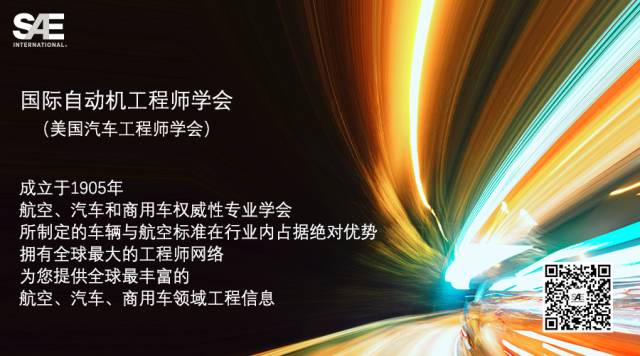 “P”代表产品已进入预备阶段:图中的P0到P4,都是博格华纳目前正在研发中的电动推进系统架构。(图型来源:博格华纳)
“P”代表产品已进入预备阶段:图中的P0到P4,都是博格华纳目前正在研发中的电动推进系统架构。(图型来源:博格华纳) 博格华纳高级工程部门的技术研究员Joel Maguire表示,公司的战略规划就是要“玩转各种混动架构”。(图片来源:博格华纳)
博格华纳高级工程部门的技术研究员Joel Maguire表示,公司的战略规划就是要“玩转各种混动架构”。(图片来源:博格华纳)
五年前还很少有人会预料到,2017年全球汽车动力总成、传动系统和燃料领域的格局会如此多样化。然而如今,几乎所有人都认为,无论是要达到欧洲、北美以及亚洲等地区最新的减排标准,还是要达成更为长远的电动化目标,发展各种类型的混合动力汽车都十分重要。
在博格华纳动力驱动系统公司(BorgWarner PowerDriveSystems)产品战略部总监John Barlage看来,“从熄火-启动系统一路发展到纯电动汽车,我们将这一历程视作‘电动汽车进化史’。”和其他动力系统一级制造商的规划师所见略同,他也认为下一个周期(2019年-2021年)中,更多车辆将会搭载48V混合动力系统,且“数量将会相当庞大”。
从已经登陆欧洲的48V系统来看,这些产自奥迪及其他德国整车厂的系统都能提供强大的车载电力,通过电动增压等方式很好地达到节能减排的效果,并能为自动驾驶辅助系统(ADAS)传感套件提供高达3千瓦的电能。
Barlage信心满满地表示,“由于48V系统的经济效益非常吸引人,将会很快在北美车型上普及。”谈及这一技术,业内普遍认为,只需要普通(功率分流)混合动力系统约30%的成本,就能获得相当于其70%的性能。博格华纳的工程师还认为,随着系统架构和封装技术不断升级,48V甚至更高电压的混合动力模块都将进行研发,以实现P2架构的应用。
在P2布局中,电机将会置于内燃机和变速箱之间(详见图解)。其他行业认可的混合动力架构布局(从前到后依次)包括:P0(主要为履带-交流电机-起动机构,简称“BAS”);P1(例如位于飞轮位置的本田IMA);P3(电机置于主减速器前的变速箱输出轴上);以及P4(也被称为四轮驱动混合动力架构,采用后桥电动驱动方式)。除P2外,其他几种方式都具有扭矩矢量控制功能。
Barlage注意到,“对传动系统而言,P2架构的出现带来了很多良机,包括能和双离合变速器(DCT)甚至自动离合装置配合工作(详情请参阅: http://articles.sae.org/15576/),同时也非常适合插电式混合动力车。P2配置下的插电式混合电动车(PHEV),在纯电动模式下的整体能效,甚至要高于混动模式。如果想要打造适合高速公路驾驶的电动车,或实现卡车的电动化,P2架构一定是首选。
同轴和异轴
“在其他的48V应用架构研发中,我们选择首先从P0开始。”博格华纳高级工程部的技术研究员JoelMaguire 说,“这样可以将同样的电机用于各个不同位置,能够产生规模效应。”
Maguire告诉《国际汽车工程》(AutomotiveEngineering International)记者,他的产品研发小组根据OEM的各项需求,对应用于P2, P3或P4型混合动力系统的电机电磁材料进行优化,从而设计出了“一系列满足OEM汽车封装要求的,结构紧凑、动力强劲的电机,而有些(竞争对手的)功率分流型的产品,甚至有些P2架构,也必须在设计上做出一些妥协,因为其车结构的灵活性和现有的汽车封装技术而言,还并不能很好地配合48V硬件设备。”
博格华纳P2架构的一大特点,就是其167毫米(合6.57英寸)的轴向长度。根据公司内部数据显示,这一长度下的额定最大扭矩可以超过330牛·米(合243磅·英尺),最大功率则能超过80千瓦(合107马力)。无论是同轴(指和变速箱输入轴、发动机曲轴以及扭矩减震器位于同一根轴上)还是异轴,这一模型都适用。而对于异轴而言,由于其安装位置在驱动桥箱上方,因此这也算是一种传动链驱动的解决方案,可以满足较小的横置发动机/前轮驱动车辆的封装要求。
“空间上的节省主要在车轮之间,同时由于轴长不变,因此可以避免可能发生的机械损坏。”Maguire解释道,“这一模型弃用了交流电机,可以将空调压缩机整合到同一个链传动装置上,在发动机关闭时,仍可以用48V系统让空调保持运转。”
上述两种P2模块中都包含一个分离式离合器,置于电机和双质量飞轮的集成结构内,可以与当下最流行的传动技术搭配使用,其中包括行星齿轮步进式自动变速箱,双离合变速器(DCT)、无级变速器(CVT)以及自动换挡系统等。博格华纳的工程师指出,P2架构的另一大优势就是:可以继续使用目前已有的发动机和传动系统。
“采用了P2架构,就可以在发动机和变速箱之间加入一个模块。当然,这一方案并非绝对理想。”Barlage说,“但同专门用于混合动力的变速器相比,这仍是更经济的选择,涉及的调整也会少很多,而且还能改变尺寸大小。”而在配合DCT的配置时,使用P2架构则可以成为三离合器布置,也就是博格华纳所说的“K-Zero”系统,其中包括了连接到电机的分离式离合器,以及负责在两套齿轮组之间进行切换的K1和K2离合器。
Maguire特别指出,“我们的战略规划是要玩转各种驱动架构涉及,从P0到P4都能应用自如。而通过观察OEM对各种混合动力驱动架构的探索,以及不断的学习研究,我们已经打造出了一套可用于各种设计布局的系统。”
Five years ago, few predicted the high level of fragmentation in powertrains, drivelines and fuels that exists in 2017. Nearly everyone now agrees, however, that Hybridization of all types is essential to meeting the latest European, North American and Asian emissions regulations and in bridging toward the long-term electric future—whenever that comes.
“We see it as a ‘spectrum of electrification’ from stop-start systems all the way to pure EV—and everything’s in play,” observed John Barlage, Director of Product Strategy, of BorgWarner PowerDrive Systems. Like other Tier 1 powertrain systems planners, he sees “very large volumes” of 48V hybrid applications coming in the next (2019-2021) cycle.
Already arriving in Europe from Audi and other German OEMs, the 48V systems provide greater on-board electrical power for CO2-reducing features such as e-boosting, and for ADAS (automated driver assistance systems) sensor suites which can gobble up to 3 kW.
“We’re going to see North America adopt 48V because it has such interesting economics,” Barlage asserted. The technology is often described as delivering about 70% of the performance of a conventional [powersplit-type] dedicated hybrid for about 30% of the cost. BorgWarner engineers also considered system architecture and packaging in developing a broad new portfolio of 48V and higher voltage hybrid-power modules aimed at P2 (position 2) applications.
In the so-called P2 location, the electric motor is located between the combustion engine and transmission; see diagram. The other industry-recognized hybrid positions include (starting from the front of the vehicle) P0 (belt-alternator-starter ‘BAS’); P1 (such as Honda’s IMA in the flywheel position); P3 has the motor on the transmission output shaft ahead of the final drive, and P4 (electric rear axle drives) often called ‘through the road’ AWD hybrids. The latter also offers torque-vectoring capability.
“P2 offers a lot of very interesting driveline opportunities,” Barlage observed, “including paired with dual-clutch (DCT) and even automated-clutch manuals [see http://articles.sae.org/15576/]. It also presents a very nice combination for plug-in hybrids. A P2 with PHEV capability actually delivers better overall efficiency in pure electric mode than a powersplit type does. If you want to go on the autobahn in electrically, or want to electrify a truck, you want a P2 type hybrid.”
On- and off-axis
“P-Zero ‘BAS’ systems were the starting point of our development with the same 48-V motor module used in the other positions,” explained Joel Maguire, BorgWarner’s Technical Fellow, Advanced Engineering. The engineering strategy “has economies of scale by applying a common electric machine across the locations.”
The product development team designed what Maguire calls “a nice, compact motor-generator ‘form factor’ based on a broad set of OEM vehicle-packaging requirements,” optimizing use of the e-motor’s magnetic material for P2, P3 or P4 applications, depending on what the OEM needs. “Some [competitors’] powersplit and even P2 architectures have had to compromise because their hardware wasn’t so ‘comfortable’ in terms of its flexibility with the existing vehicle package,” he told Automotive Engineering.
BorgWarner’s P2 module features an axial length of 6.57 in (167 mm). Rated peak torque is greater than 330 N·m (243 lb·ft). Peak power is greater than 80 kW (107 hp), according to the company. It is engineered for both on-axis (meaning located on the same axis as the transmission input shaft, engine crankshaft and torsional damper) and off-axis fitments. The latter, mounted piggyback on the transaxle case, is a chain-driven solution designed for the tight packaging needs of smaller transverse-engine/front drive vehicles.
“The key savings is the space from wheel to wheel; it avoids potential tear up, with zero length in axial growth,” Maguire explained. “You eliminate the alternator and can integrate the AC compressor on the same chain drive and can still run the compressor off the 48V when the engine is off.”
Both P2 modules include a disconnect clutch nested within the e-motor and an integrated dual-mass flywheel, enabling integration with popular transmissions: planetary step-type automatics, DCTs, continuously variable (CVTs) and automated manuals. The BorgWarner engineers note another P2 advantage: re-use of the existing engine and transmission.
“With P2 you’re dropping a module in between the engine and trans. For sure, it’s not a perfectly ‘clean’ addition,” Barlage said. “But compared with a dedicated hybrid transmission it’s still less expensive and requires a lot less modification. And it’s scalable.” Engineered into a DCT, the P2 unit becomes a triple-clutch arrangement or what BorgWarner calls ‘K-Zero’ with the disconnect clutch connected to the e-motor and the K1 and K2 clutches handling the shifting between the two gear clusters.
“Our strategy is to play in all architectures, from P-Zero to P4, so as we see OEM movement into any of the hybrid positions, we’ve got a system engineered for them all,” Maguire noted.
Author: Lindsay Brooke
Source: SAE Automotive Engineering Magazine
等级
打分
- 2分
- 4分
- 6分
- 8分
- 10分
平均分
- 作者:Lindsay Brooke
- 行业:汽车
- 主题:零部件动力与推进力安全性人体工程学/人因工程学电气电子与航空电子
